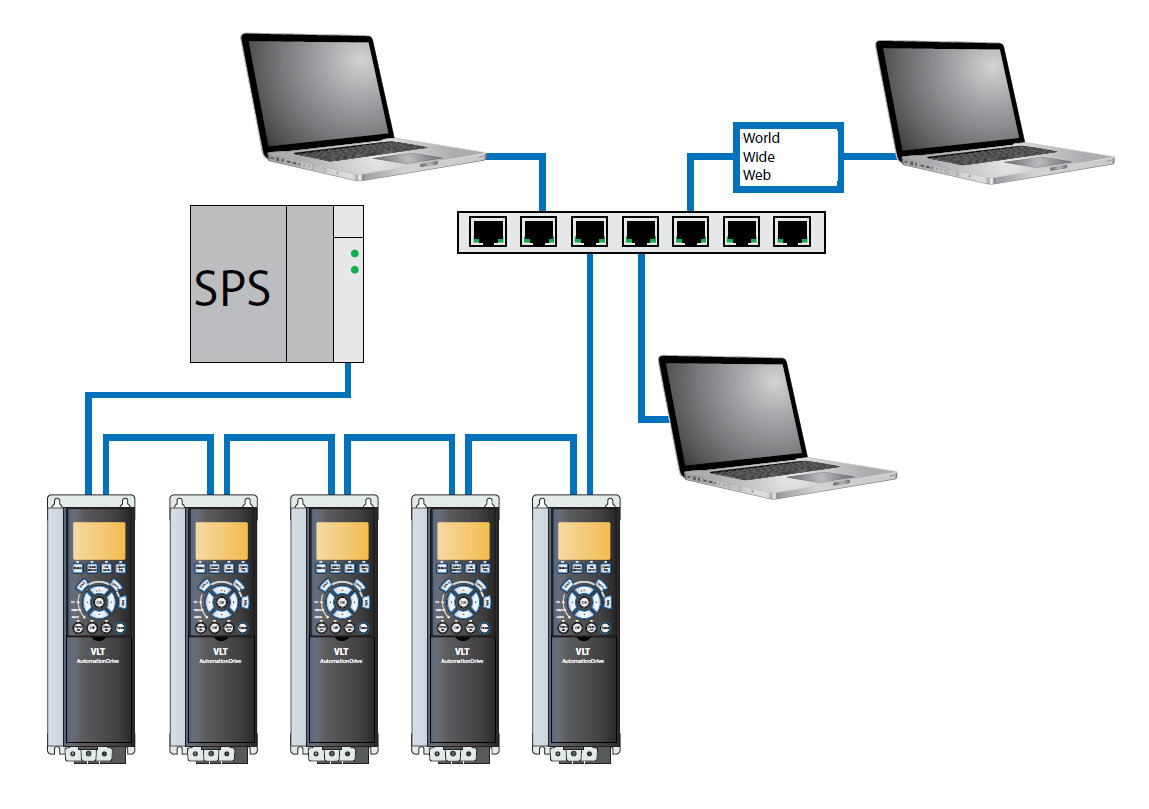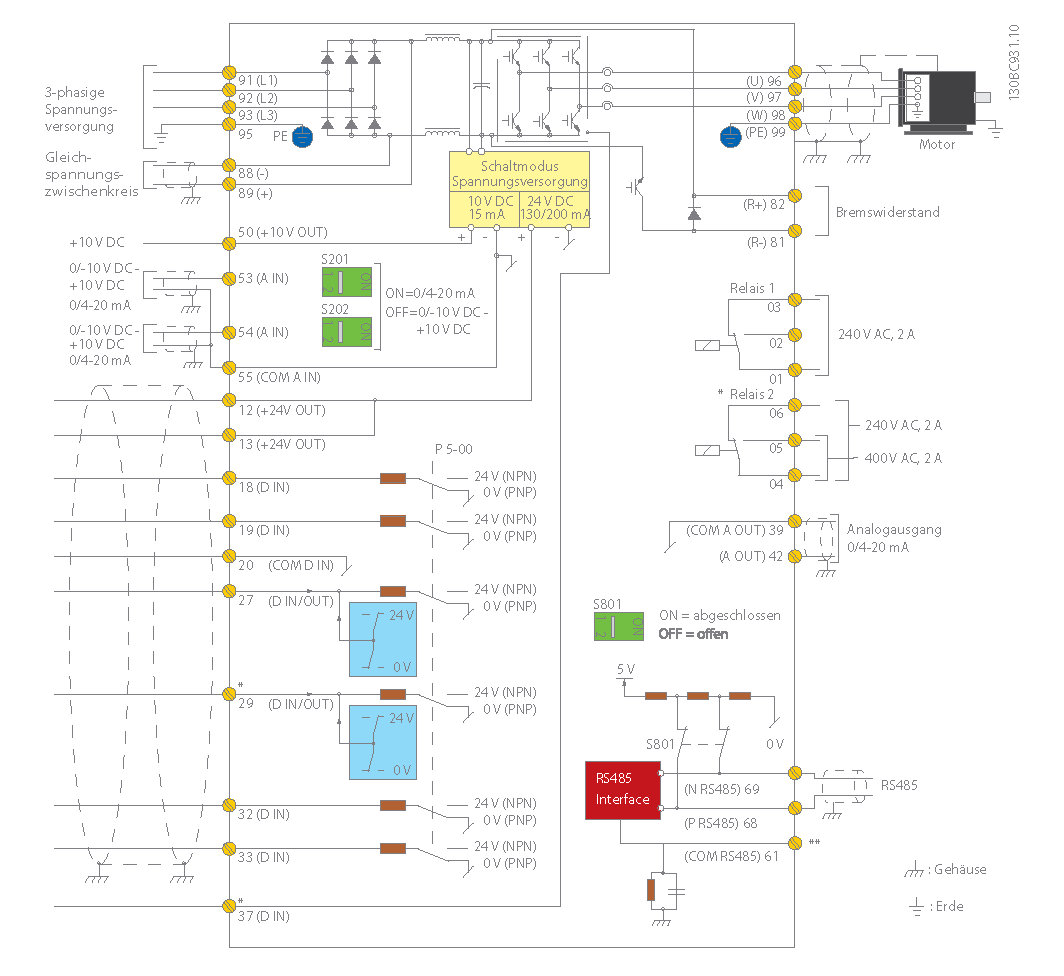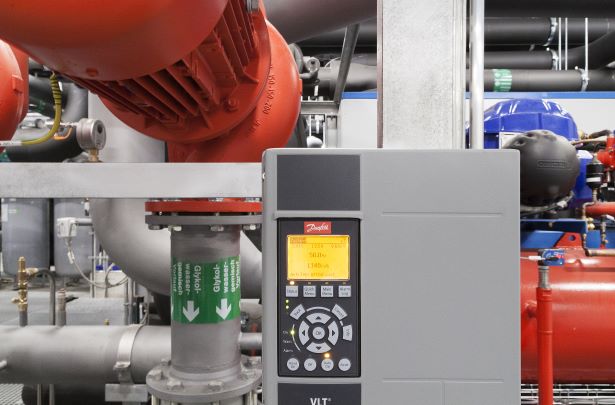Fieldbus or analog interface?
In order to integrate the VLT® HVAC Drive FC 102 into existing building management systems, such as in this case into the air conditioning/cooling of the NTT data center in Frankfurt am Main, the Danfoss frequency converter comes with a variety of possible interfaces or protocols. Thus, it integrates seamlessly into existing solutions or allows the selection from all communication standards commonly used in industry and building automation.
NTT uses two different solutions in their application. Thus, those responsible rely on a Modbus TCP interface for the integration of the VLT® HVAC Drive into the building management system for cooling all rooms, but especially the servers. This allows the system to monitor all data from connected sensors and the status of the devices.
Fieldbus - easy integration into building management systems

The fieldbus connection is very easy to manage, because the HVAC Drive can already be ordered from the factory with the Modbus TCP fieldbus module in slot A and then simply parameterized in the plant. The advantage of this is that the 24 V DC supply can be used to continue to query and monitor the drive in the event of a power failure as long as this 24 V supply is available. In addition, in the event of a change in fieldbus technology, NTT can simply continue to operate the drives by replacing the fieldbus module. In addition to Modbus TCP:
- PROFIBUS DP
- DeviceNet
- LonWorks
- BACnet
- PROFINET
- EtherNet/IP
- BACnet/IP
Using these fieldbuses, the VLT® HVAC Drive can then also act as a node and transmit data from sensors connected to the interfaces, such as PT-1000 room temperature sensors, to the control system. This saves additional hardware.
Analog and digital inputs and outputs - Interfaces to the outside world
Quasi the eyes, ears and feelers are the interfaces of the VLT® HVAC Drive FC 102. It uses them to make contact with its direct environment by means of sensors or actuators. Two analog inputs are available, which are suitable for signals from 0..10 V or 0/4..20 mA, five digital inputs configurable for a variety of functions, and two digital interfaces that can be inputs or outputs depending on programming.

NTT uses one of the analog inputs in the system to specify the setpoint speed of the frequency inverter. This results in a Siganl of 0..10 V is used to precisely adjust the speed. Alternatively, this specification is also possible via fieldbus, but in the event of an error, the analog specification offers the possibility to quickly check the functionality – i.e.: the incoming signal level – with simple measuring devices in order to then take appropriate measures. The functions of the individual interfaces can be configured and adapted to the requirements in the various, clearly arranged parameter groups either directly on the inverter or by means of PC-based VLT® Motion Control Tool MCT 10 software.
Braking resistor, relay and serial communication

In addition to the analog and digital inputs and outputs, further connections are available. This includes the connection for a braking resistor, an RS485 interface that also handles internal protocols of the FC 102, an analog output for 0/4..20 mA and two changeover relays are available.
With all these interfaces, which can be further expanded via additional modules for various tasks, VLT® HVAC Drive can also take over tasks independently as stand-alone devices via the integrated intelligence and thus make external small PLC solutions superfluous. In particular, this can also be realized in remote locations under difficult environmental conditions due to the robust IP55 solution, as it can also be installed outdoors without much additional effort.
